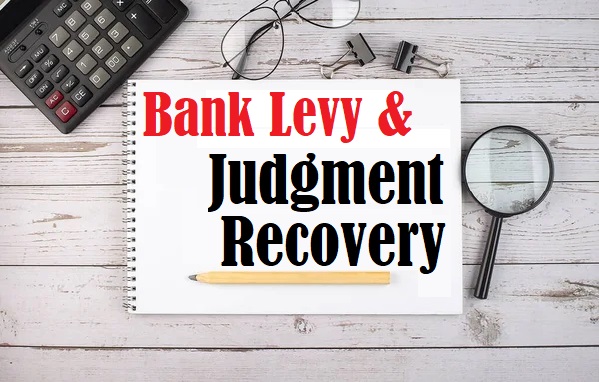Collecting a debt after securing a court judgment can be a complex process, especially when it involves freezing a debtor’s bank account. This comprehensive guide will walk you through each step of the post-judgment bank levy process in California. We will provide insights into the necessary documents, including form names with direct links, and explain the advantages of partnering with an experienced Private Process Server such as Countrywide Process. Additionally, we will cover the essential steps to open, serve, and close a levy account with the Sheriff’s Office.
Since January 1, 2013, executing bank levies in California has become more efficient and effective. Thanks to California Assembly Bill 2364 (Chapter 484, September 23, 2012), a significant change has occurred. This law mandates that financial institutions establish a central address for receiving all levy-related documents. Now, serving documents to the bank’s central address allows creditors to access all of the debtor’s funds in any branch across California. This is a departure from the previous practice where funds were only collected from the specific branch where the documents were served, leaving untouched accounts in other branches.
Many major California banks, such as Bank of America, Chase, and U.S. Bank, have designated central addresses, most of which are located in Los Angeles County. This development streamlines the process for creditors. With just one writ of execution (issued in Los Angeles County), communication with a single sheriff’s department, and engagement of a sole process server, creditors can now levy all of the debtor’s accounts at these large banks.
Moreover, the new law presents a cost-effective option for creditors who may not know the exact location of the debtor’s accounts. By banking on the possibility that the debtor maintains one or more accounts with the largest banks, creditors can now levy on these banks without prior investigation. This strategic approach simplifies the process and saves time and effort for creditors.
1. Obtain a Judgment: The process begins with obtaining a judgment from the court, affirming your legal right to collect the outstanding debt.
2. Identify the Debtor’s Bank: Determine the bank where the debtor holds their account(s) as this information is vital for subsequent steps.
3. Prepare the Required Documents: To initiate a bank levy in California, you must prepare several documents:
· Sheriff’s Instructions (To be served by a Private Process Server) No eSignatures (yet).
· Writ of Execution (Form EJ-130):
· Memorandum of Costs After Judgment (Form MC-012):
· Notice of Levy (Form EJ-150):
· Memorandum of Garnishee (Form EJ-152):
· Exemptions from the Enforcement of Judgments, (Form EJ-155):.
· Exemptions Under Section 703.140(b)(Form EJ-156): .
· Earnings Withholding Order (Form EJ-160) (Blank):
· Financial Statement (Form EJ-165) (Blank):
· Electronic Writ Declaration for California. Keep in mind that, Sheriff Forms may differ by county.
Contact your County Sheriff for correct form.
4. Deliver Documents to the Sheriff’s Office and Open Levy Account: Simultaneously, the document set, including the Sheriff’s Instructions bearing a “Private Process Server” stamp, should be delivered to the sheriff’s office. Additionally, open a Sheriff’s Levy Account to hold the funds collected from the debtor’s bank account. Contact your local Sheriff’s Office to inquire about the specific requirements for opening a levy account.
· Advantages of a Private Process Server: Hiring a Private Process Server, such as Countrywide Process, can expedite the bank levy process. They specialize in serving legal documents efficiently, ensuring a prompt start to the bank levy process.
5. Service of Process: After submitting the required documents and fees, the appointed Private Process Server will serve the bank with the Writ of Execution. This action notifies the bank of its legal obligation to freeze the debtor’s account and provides information on the levying officer overseeing the process.
6. Bank Freeze and Notification: Upon receiving the Writ of Execution, the bank will freeze the debtor’s account and notify the debtor of the levy. The debtor has a brief window to challenge the bank levy in court at this stage.
7. Closing the Levy Account: Once the bank levy is successfully executed, and the funds are collected in the levy by the levy officer and the proceeds are distributed to the judgment creditor.
Explore the step-by-step guide to executing a post-judgment bank levy in California. Learn the key documents to prepare, including form names with direct links. Discover the advantages of hiring a Private Process Server like Countrywide Process with over 23 years of experience. Find out how to open, serve, and close a levy account with the Sheriff’s Office.
Countrywide Process specializes in the service of Bank Levies and Wage Garnishments. Let us make your life simpler, contact us today.
Contact Information
Contact us
Local Phone: 818.980.7378
Toll Free: 888.962.9696
Login Now

Countrywide Process
October 30, 2023